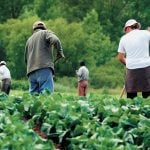The incidence of club root is on the rise in Alberta canola crops from St. Albert to Fort Saskatchewan in the Edmonton area.
The disease has spread to 40 fields this year from about 10 in 2003, said Dan Orchard, of Sturgeon Valley Fertilizers at St. Albert.
That number could be higher, he said, citing several phone calls received about club root Sept. 12. Some producers may also be misdiagnosing it as sclerotinia.
“People in the area are starting to panic; some are hiding the fact they have it,” he said, noting many fear they will not be able to rent out their land.
Read Also

August rain welcome, but offered limited relief
Increased precipitation in August aids farmers prior to harvest in southern prairies of Canada.
Areas affected include zones north, northeast and northwest of Edmonton.
Orchard said the most seriously affected fields had a pH level around six.
“It seems like those with higher pH had less risk and they might be in good shape,” he said.
It is most apparent at swathing when the poorly rooted plants easily pull out of the ground.Signs to watch for include premature ripening, off-coloured plants in odd-shaped patches and galls on the roots.
Orchard said damage reports range from minor to more serious, with yield losses of 10-80 percent.
Murray Hartman, oilseed specialist with Alberta Agriculture, said there is no known control for club root, which can live in the soil for years.
Hartman stressed the need for thorough cleaning of equipment that has come in contact with infected plants.
Growing canola only once in four to five years on the same land can also reduce the incidence by half, he said. Dry conditions early in the season likely limited yield losses.
“It likes it wet,” he said.














